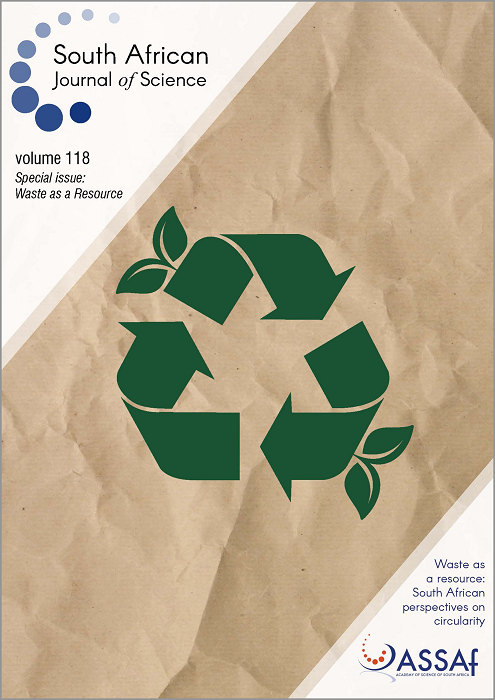What material flow analysis and life cycle assessment reveal about plastic polymer production and recycling in South Africa
DOI:
https://doi.org/10.17159/sajs.2022/12522Keywords:
plastics, material flow analysis, life cycle assessment, recycling, South AfricaAbstract
Global production and consumption of plastics have increased significantly in recent years. The environmental impacts associated with this trend have received growing attention internationally with single-use plastic packaging responsible for most plastic pollution. Locally, the SA Plastics Pact, the Industry Master Plan, and the National Waste Management Strategy all aim to transform the current linear sector model into a circular system by setting targets for increased collection and recycling rates and recycled content. However, the associated impacts of implementing such circular interventions have not yet been assessed across the plastics life cycle. Industrial ecology tools, material flow analysis and life cycle assessment, are used to generate mass-based indicators as well as indicators of climate damage in the form of the global warming potential. The carbon footprint of the South African plastics value chain from cradle to grave was estimated at 17.9 Mt CO2eq emissions in 2018, with 52% of these due to the local coal-based monomer production process. The end-of-life stage lacks proper waste collection for a third of the population, but contributes only 2% to the total greenhouse gas emissions, with recycling having a minimal environmental impact. Future projections of plastics production, use, disposal, and recycling for 2025 show that increasing mechanical recycling rates to achieve stated targets would start to have a significant effect on virgin polymer demand (in the order of several billion rands of sales annually) but would also reduce waste disposal by 28% relative to baseline growth and 18% below values calculated for 2018.
Significance:
- Despite increased attention, the flows and resulting life cycle-based carbon footprint of the plastics sector have not been evaluated on a local scale.
- The carbon footprint of the South African plastics industry is sizeable at almost 18 Mt CO2eq per annum with emissions strongly associated with the linear rather than the circular stages of the value chain.
- The impacts of a key circular economy intervention, namely increased recycling rates to achieve set targets include demand reduction for virgin polymer to the tune of several billion rands.
Published
Issue
Section
License

All articles are published under a Creative Commons Attribution 4.0 International Licence
Copyright is retained by the authors. Readers are welcome to reproduce, share and adapt the content without permission provided the source is attributed.
Disclaimer: The publisher and editors accept no responsibility for statements made by the authors
How to Cite
- Abstract 1203
- PDF 1031
- EPUB 296
- XML 338
Funding data
-
National Research Foundation
Grant numbers 121668












.png)